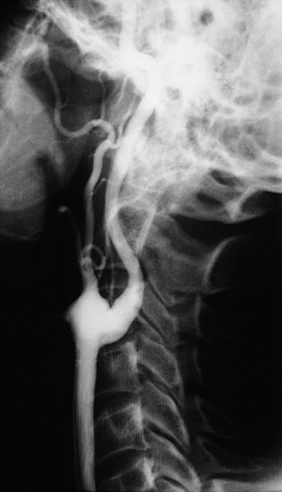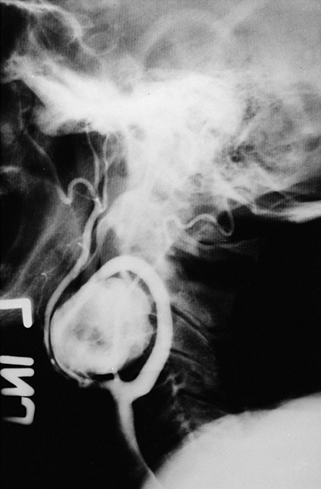The carotid artery bulb is the site of true aneurysms in more than 95% of cases (Figures 1 and 2). Bilateral aneurysms are noted in 12% of cases, and no predilection exists for right- or left-sided involvement in patients with unilateral aneurysms. Because the normal carotid bulb is usually 40% greater in diameter than the more distal internal carotid artery, it requires very little expansion to reach the 50% dilation level. The latter is a generally accepted definition of an aneurysm. However, given the normal dilation of the carotid bulb, it becomes difficult to define the natural history of borderline-sized aneurysms. Because of concerns over one’s ability to differentiate a generous-sized carotid bulb from a small aneurysm, it has been proposed that an aneurysm only exists when the carotid bulb dilation at least is 200% greater than the extracranial internal carotid artery diameter or 150% of the common carotid artery diameter. Although true arteriosclerotic aneurysms have been encountered in the common carotid artery and the more distal internal carotid artery, trauma or some other vascular insult has likely preceded aneurysm development at these latter sites. Aneurysms affecting other arteries in patients with carotid artery aneurysms have been observed in nearly 25% of cases.
Extracranial Carotid Artery Aneurysms
True Carotid Artery Aneurysms
Incidence


![]()
Stay updated, free articles. Join our Telegram channel

Full access? Get Clinical Tree


Thoracic Key
Fastest Thoracic Insight Engine
